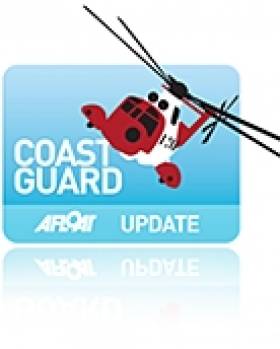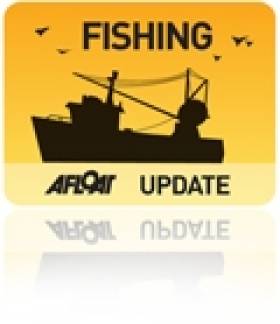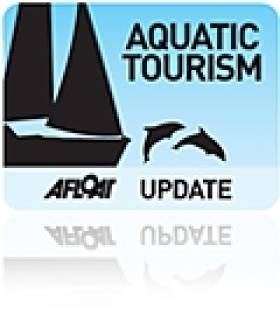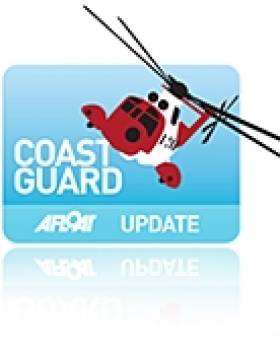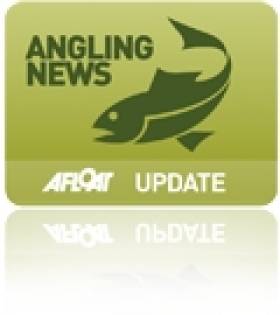Displaying items by tag: Northern Ireland
Al and Cotty Take On Giant Wave
The surfing website MagicSeaweed has posted a breathtaking pictorial of boarders Al Mennie and Andrew Cotton taking on the incredible Finn MacCools wave at the Giant's Causeway.
"The funny thing is this wave has been breaking right under our noses for years at Northern Ireland's premier tourist spot!" said Mennie. "It's one of those mythical places people often mention, wondering if there are waves out here."
'Al' and 'Cotty' were among the surfers who discovered the now-famous Prowlers wave off the west coast of Ireland last year - the exact location of which is still a closely-guarded secret. SEE VIDEO BELOW
More photos and vide on this story HERE
Bangor 'Not On Original List' of Coastguard Centre Closures
Northern Ireland’s only coastguard base was not originally among a list of those earmarked for closure, the Belfast Telegraph reports.
However the Bangor facility was added to the list after a "personal intervention" from UK Shipping Minister Mike Penning.
The minister has confirmed to the House of Commons that the original draft list of closures for streamlining the UK's coastguard service originally named Liverpool as the centre to be shut down.
Now the Bangor control centre is being pitted against Liverpool in the service shake-up as previously reported on Afloat.ie that will leave just three full-time coastguard stations across the UK.
NI Minister Welcomes Renewable Energy Forum
Northern Ireland Energy Minister Arlene Foster has welcomed the setting up of the Offshore Renewable Energy Forum, tasked with evaulating the potential of Ireland's offshore resources.
"Members of the forum can help shape the sustainable development of offshore renewables in Northern Ireland waters to optimise the economic, social and environmental benefits. Their participation and engagement is essential," said Minister Foster.
Members will look specifically at how Northern Ireland’s offshore resources can contribute to the NI Executive’s 40% renewable electricity target by 2020.
The forum includes members of the previous cross-departmental Offshore Renewable Energy Project Steering Group, joined by key stakeholders Alan McCulla of the Anglo North Irish Fish Producers Organisation; Michael Robinson of Belfast Harbour Commissioners; Ben Diamond of the NI Marine Task Force; David Bell of Invest NI; Kerry Curran of the NI Renewable Industry Group and Cllr Edward Rea of Northern Ireland Local Government Association, representing the NI coastal councils.
Study of NI Waters Shows Cod, Whiting at Lowest Levels
A new study of Northern Ireland's waters has found that stocks of cod and whiting are at their lowest ever recorded levels.
The Northern Ireland State of the Seas report, launched by NI environment minister Edwin Poots and agriculture minister Michelle Gildernew, showed that while herring and haddock stocks are improving, some species remain "seriously depleted", according to the Belfast Telegraph.
"This is a key time in managing our marine environment," said minister Poots. "We have an extremely rich and varied coastline with the marine species in our seas contributing to over half the overall biodiversity in Northern Ireland."
The report also evaluates the potential of other marine resources such as tourism, beaches, shipwrecks and renewable energy - all of which will contribute to new planning laws covering the marine environment.
The Belfast Telegraph has more on the story HERE.
New Marina Centre for Ballycastle
Work has begun on a new visitor services building at Ballycastle harbour as part of a £7.4 million (€8.6 million) marine tourism project for the nothern part of Ireland and western Scotland.
Moyle District Council is one of 20 partners involved in the Sail West Initiative to develop boating, angling and marine tourism related infrastructure along the Northern Ireland coast north of Belfast Lough, Counties Sligo and Donegal, and a large part of Scotland's west coast.
The plan will see the demolition of the existing bungalow at the harbour, to be replaced with a new state-of-the-art marina building and harbourmaster's office with shower, kitchen and laundry facilities.
The council will also take part in an extensive marketing campaign along with the other Sail West partners to promote the region as an important sailing destination for sea-faring tourists.
The Ballymoney Times has more on the story HERE.
Campaign to Preserve NI Coastguard Service
Supporters of Northern Ireland's coastguard control centre have launched a campaign to prevent any reduction of its service.
As previously reported on Afloat.ie, the Maritime Rescue Coordination Centre at Bangor faces the axe under proposals to streamline coastguard services across the United Kingdom.
"Based on [the Maritime and Coastguard Agency proposals], MRCC Belfast could be at best a daylight-only station, or at worst close," argues the Belfast Coastguard Support Group (BCSG).
The group says it is campaigning not only to maintain the coastguard presence in Northerm Ireland, but also "to ensure that it remains a 24-hour 365-day-a-year station watching over and responding to emergencies on our coastal areas and inland waterways".
Responses from the public to the proposals will be accepted until 24 March. The BCSG has urged everyone in Northern Irerland to have their say and show their support for retaining a full coastguard service by writing to their local MPs and MLAs.
More imformation about the campaign is available at www.belfastcg.com
New Passenger-Only Ferry for Northern Ireland-Scotland Route
Plans to operate the first passenger-only ferry service between Northern Ireland and Scotland are scheduled to start in late May, writes Jehan Ashmore.
Kintyre Express is to operate a Ballycastle-Campbeltown service on Fridays, Saturdays and Sundays between 27 May and 26 September. Three daily return trips are scheduled on the service though the 1200hrs sailing from Campeltown and the corresponding 1400hrs sailing from Ballycastle will only operate on customer demand.
The passage time is scheduled to take approximately 1 hour 30 minutes between County Antrim and the Mull of Kintyre which is a distance of some 50 kilometres / 30-miles. Ticket fares for a single journey are £30 and the return is £55. On the remaining days that the route is not operated on, the boat is available for private charter.
In addition the new venture is to include an on-demand Campbeltown-Troon route running between April and September. This second service, linking Argyll with Ayrshire, will operate on Sundays, Wednesdays and Fridays. The journey time is somewhat shorter with a scheduled time of 1 hour 15 minutes. The on-demand service must be booked in advance with singles fares costing £50 and a return ticket at £80. For further information click www.kintyreexpress.com
Like the recent proposals announced for a passenger-only ferry service across Galway Bay click here, the Kintyre Express operation will also use a fast-ferry in the form of rigid inflatable boats (RIB). The two routes from Campeltown will be served by Redbay Stormforce 11 metre RIBS which have centrally heated fully enclosed cabins for about 10 passengers. The Redbay Boats are built in Cushendall, Co. Antrim, for further information about the type of RIB to be used on the new routes click here.
The Ballycastle-Campbeltown route will be unique in that it will be the sole passenger-only ferry operator serving between the island of Ireland and the UK.
When the second route opens between Campbeltown-Troon, the company will be able to provide their boat service linked in with a train journey to Glasgow which they claim can be completed in less than two hours. Trains between Troon and Glasgow Central Station operate every 30 minutes and with a journey time of approximately 40 minutes.
For those who are car-free and time-free, this most northerly of travel routes is arguably the most scenic way to travel between Northern Ireland and Scotland and will appeal also to the intrepid traveler.
On both ferry services bicycles are carried for free and currently there is a special offer with all ferry tickets that can also be used for a free-day pass on the local Kintyre bus network for up to 24-hours. The bus operator is Craig of Campbeltown which trades as West Coast Motors and which owns Kintyre Express. The bus operator also serves on routes throughout Argyll and the island of Bute.
The next nearest cross-channel operator to the Kintyre Express Ballycastle-Campbeltown service is the car-carrying catamaran fast-ferry seasonal service between Larne and Troon operated by P&O (Irish Sea). The same company operates the year-round conventional car-ferry service on the North Channel between Larne and Cairnryan. Also operating to Loch Ryan is Stena Line which operates both ferry and HSS fast-craft services on the Belfast-Stranraer route.
Over the years there have been several attempts to revive the ferry between Ballycastle and Campeltown following a service that catered for vehicles too. For three summer seasons starting in 1997 the service was operated by the Argyll and Antrim Steam Packet Company, using the Claymore (1978/1,632grt) which could accommodate 500 passengers and 50 vehicles.
In 1996 the vessel was chartered to carry out tender duties for visitors and crew of the aircraft-carrier USS John F. Kennedy (displacement 82,655 tons full load) which was at anchor off Dun Laoghaire Harbour.
Cameron Dodges Issue of Bangor Closure
British Prime Minister has dismissed concerns over the potential loss of Northern Ireland's Coastguard centre.
The Belfast Telegraph reports that when questioned on the future of the Bangor control centre by DUP MP Jim Shannon, David Cameron replied that he understood "the need for good air sea rescue".
“I think what matters is not necessarily who is carrying it out, but are they fully qualified, is it a good service and is it value for money?” he added.
As previously reported on Afloat.ie, the Bangor Coastguard control centre is facing closure under reforms to the service across the UK announced by Shipping Minister Mike Penning.
Cold Weather Threat to Fish in NI
The recent cold snap has posed a serious threat to Northern Ireland's fish.
The Belfast Telegraph reports that thousands of salmon froze to death at a fish farm in Co Antrim last week as temperatures dropped well below zero.
Staff at the British government research centre in Bushmills have battled against the elements to protect their fish stocks, as rivers and canals throughout the country have frozen over into virtual ice rinks.
Centre manager Martin McAleese told BBC Radio Ulster: "Unless you keep the water running in the tanks overnight, they'll run out of oxygen. The fish suffocate."
The full extent of last week's extreme cold on inland waters is not yet known, but it is feared that angling in the area could be affected.
NI Coastguard Centre Faces Scale Back, Possible Closure
The UK's shipping minister has announced proposals that would see a reduction in operational hours or even the closure of Northern Ireland's coastguard command centre.
Earlier this week news emerged that the rescue command centre at Bangor was under threat by public spending cuts.
Now the News Letter reports that Minister Mike Penning's proposals would see only three 24-hour coastguard stations across the UK - in Aberdeen, Southampton and Dover - with five sub-centres operating in daytime hours, one being based either at Bangor or Liverpool.
Campaigners have voiced their opposition to any reduction in Northern Ireland's local coastguard service. North Down independent MP Lady Sylvia Hermon told the News Letter that it was vital a well trained and equipped service was retained in the area.



























